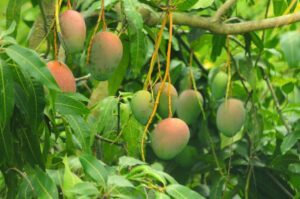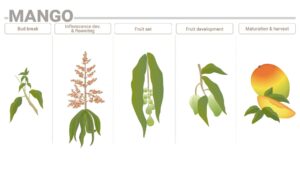A field trial was conducted from 2005 to 2009 to study the effects of pruning and foliar sprays on flowering and fruit yield in ‘Alphonso’ mango at the Indian Institute of Horticultural Research in Bangalore. Trees were 16-years old and raised on the rootstock ‘Peach’. Trees were spaced at 10 m x 5 m under rain-fed condition on a red loamy soil with pH 7,2 and available nutrient contents of 249 kg N/ha, 14 kg P/ha and 149 kg K/ha. Seven treatments (Table 1) were applied and the trial was laid out in RBD design with four replications. Pruning treatments were imposed after harvesting in August, K2HPO4 and KH2PO4 sprays were applied in October and KNO3 and thiourea sprays at the time of bud-break in December. A spray volume of 4 liters/tree was used for the foliar applications. All treatments increased the number of fruits per tree and the fruit yield compared to the control. The highest increase was observed when pruning was combined with 1% K2HPO4 + 1% KNO3. This resulted in almost doubled fruit yield (64 kg/tree) compared to the control (33 kg/tree) (Table 1). Both treatments with potassium nitrate gave the highest gross and net returns, and consequently also the maximum cost:benefit ratio.

Table 1. Effect of pruning and foliar nutrient sprays on number of fruits, fruit yield and cost:benefit ratio in mango cv. Alphonso.



